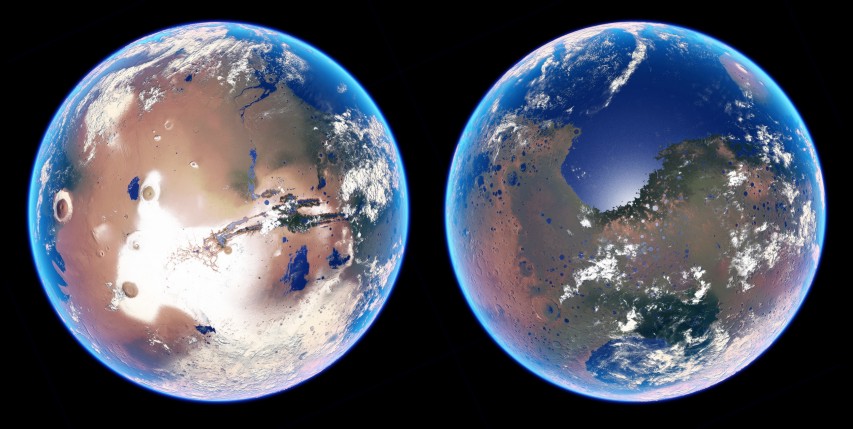Don,
Don. Edwards wrote:How many hadley cells will a Terraformed Mars have, and with an atmosphere twice as thick as the Earths.
I think it does not depend on the density of the atmosphere, only these factors: the angular speed of the planet and the size of the planet.
Once I saw a formula for calculating the number of cells, though now I can't find any reference like that. I remember you had to round the result to the nearest odd integer. The number of cells per hemisphere has to be odd. Think of cog wheels who's teeth must not grate against each other. By the way, I now see that 'Hadley cell' is strictly the name given to the cells adjacent to the equator. The others are 'Polar cells' about the poles and 'Ferrell cells' in between.
The situation seems to be like this: on average over the year, heating is greatest at the equator and makes hot air rise there, while heating is least at the poles, and cold air falls there. In between, air tries to travel between pole and equator along longitudes. The Coriolis force makes these longitudinal flows shift sideways and on Earth at about 30?° latitude the Hadley cells end. At the poles, the Polar cells end at 60?°. In between, a Ferrell cell must sit to make the circulation consistent - like cog wheels.
Anyway, I think the simplest way to think about it is like this: taking Earth's three cells per hemisphere as a real example, a planet rotating twice as fast would break the flow in half the longitudinal distance as Earth, while a planet twice the size as Earth would fit in twice as many cells. Thus, each of these planets would have five cells per hemisphere, maybe seven, but not six. Mars' has almost exactly the same rotation but is only half the size, so it has room for only one cell per hemisphere - 1?? is rounded down to 1 - and it's a Hadley cell. Exercise!: Suppose something like Gliese 581 c may be 1?? times the size of Earth and spin in only 12 hours. Now 3 ?— 1.5 ?— ( 24 hours / 12 hours ) = 9, so it's very like to have 9 cells per hemisphere - a very banded planet. Large size and fast rotation is why gas giants like Jupiter are very banded.
Implications for textureers of super Earths:
a) Cloud textures should be banded.
b) Surface textures should be banded for deserts and forests to the same degree.
Apart from that it's hard to say, because the more one looks into it, the more detail one discovers - hence why I warn that eventually you discover a new fact the seems to invalidate everything you've done. For example, I've found something called the Rossby (or Kibel) number:
Rossby number (
http://en.wikipedia.org/wiki/Rossby_number). Can we assume the Rossby number is similar for Mars weather as for Earth's? Answers on a supercomputer, please...
Spiff.





